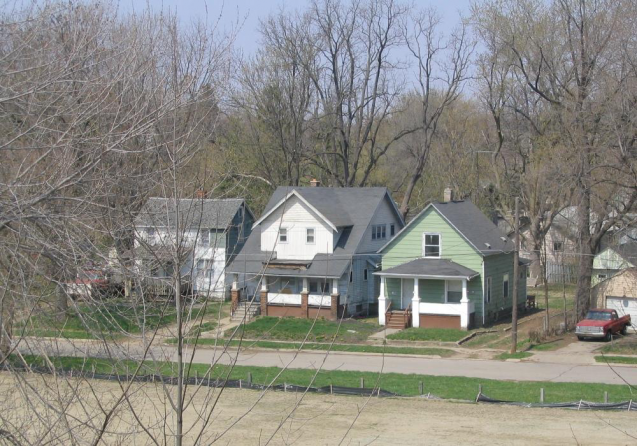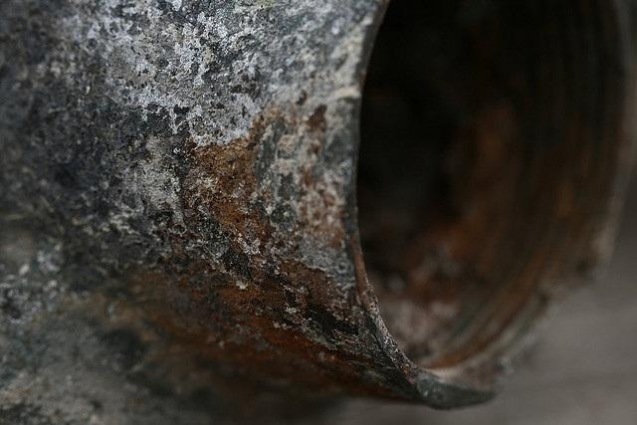Flint crisis opens door on water problems around US

As the impacts and implications of the municipal water crisis in Flint, Michigan continue to unfold, many questions about exactly what happened, why, and who is to blame remain unanswered. In this post, experts from the Columbia Water Center, the Earth Institute and affiliates weigh on the nature of the crisis and what it means for America's Water.
Upmanu Lall, director of the Columbia Water Center: "The core of the issue is that many communities across the country are struggling with the ability to maintain and operate their water infrastructure. Flint shows what can happen when short term decisions are made in the absence of local, state and federal support for a long term strategy to anticipate the local infrastructure renewal needs and ensuring that there is reliable access to a safe drinking water supply.
"This particular manifestation is a sad case where efforts at cost cutting, concerns with ability to pay, led to a sequence of decisions by different individuals that emerged as a crisis. Each decision—shift of water source, inability to detect the problem early, inability to apply phosphate coatings in a timely manner, inability to identify where the lead pipes are, inability to pay for replacing the pipes—reflects a consequence of an enterprise that struggled with financial (and as a result technical) constraints at each step.
"The top officials at the state level clearly emerge as the people who should and could have been able to set things right. But I can speculate that, seeing this as a much more widespread problem, especially for communities that do not have a strong local tax base, these officials also saw that the financial constraint was bigger than just Flint, and this may have contributed to their inaction. It is possible that they did not appreciate the potential impacts, or relative likelihood of what happened.

"There is a lot of focus on Flint, and who is responsible. The larger issue that is the rest of America seems to not be getting as much attention. The question of how do we know how safe our water supply is on a day-to-day basis is not being asked.
"How many communities could have a similar exposure?
"How well do we know the quality of the water that is delivered as opposed to what leaves the treatment plant and is reported to the EPA?
"What are the liabilities for public facilities or places like restaurants, who may knowingly or unknowingly provide drinking water that is not safe at the point of use?"

Irwin Redlener, director, National Center for Disaster Preparedness: "This was a crisis waiting to happen. What we have here is a perfect storm of conditions, including an aging water system, a city experiencing a prolonged economic crisis and the terrible political reality of capricious, malevolent neglect by the governor and other state officials.
"As a result, it is the children of Flint who will suffer life-long, irreversible consequences of high levels of exposure to lead, a known neurotoxin. And it is extremely distressing to know that the exposure continues. Even though the city is now back on Detroit water, severe damage to the water pipes has already been done; the lead is still leaching into the water.
"The appropriate treatment in this case is to eliminate all exposure to the contaminated water, and that's not being done. The idea of giving away bottled water and filters is understandable and helpful—but too little, too late. I don't think this situation is being handled with the urgency and intensity required by a true national disaster, which this water crisis certainly is.
"As much as politicians would like to think of Flint as an isolated case, the crisis reflects a much broader problem with America's water infrastructure. This needs to be dealt with rapidly because the exposure is happening now. We can take time to fix levees along the coast lines and reinforce buildings in seismic risk areas, hoping that nothing will happen any time soon. But in the case of the water infrastructure disaster in Flint—and elsewhere in the U.S.—this is an on-going, present tense disaster, already doing harm to children and other vulnerable people."
Katherine Alfredo, postdoctoral research scientist, Columbia Water Center: "At the heart of the Flint problem is a failure of action on the part of state officials. It seems as though several people did know of the issue and told their higher-ups, but the inability of the state and local government to take meaningful action appears to be at the heart of the problem.
"As for how the contamination happened in the first place, there is not enough of the data being discussed or available for me to ascertain. We need to know:
- Did the lead come solely from the pipes and was it city main pipes or household pipes or the leader pipes that caused the lead problems? This matters as to who is really at fault in lead leaching.
- In what way exactly did the source water change? Saying that the water was "more corrosive" really tells us nothing and conjures up images in the public's eye of pipes being eaten away by pure acid. What I want to know, is: when the water left the utility, what was the quality? What was the pH? What other chemicals were known to be present? "More corrosive" could mean just a decrease in pH, and if the previous water was at the higher range of acceptable (around 8.5) then a decrease in pH of 2 units is acceptable by law. Figuring out what exactly happened here is important."
Maura Allaire, postdoctoral research scientist, Columbia Water Center: "Flint appears to be a case of grave mismanagement. Had standard protocols been followed (i.e. treatment of elevated pH levels), Flint may not have become a crisis.
"One thing to consider is that the problem is actually much more widespread than Flint. A major incidence occurred in Washington, D.C., a little over 10 years ago, and since Flint, there have been news stories of similar lead violations (and slow reporting) in Ohio. The U.S. has old infrastructure and weak enforcement of lead regulations. Utility testing of lead at customers' homes can easily be manipulated, and EPA protocols aren't always followed.
"Another aspect is how the EPA regulates lead. Unlike other contaminants, there is no legal MCL (maximum contaminant level) for lead. There is an 'action level,' but this can be exceeded at 10 percent of customers' homes without a utility being required to take action. Also, there is no required testing at schools—only voluntary testing and remediation."
Provided by Earth Institute, Columbia University
This story is republished courtesy of Earth Institute, Columbia University (blogs.ei.columbia.edu/)



















